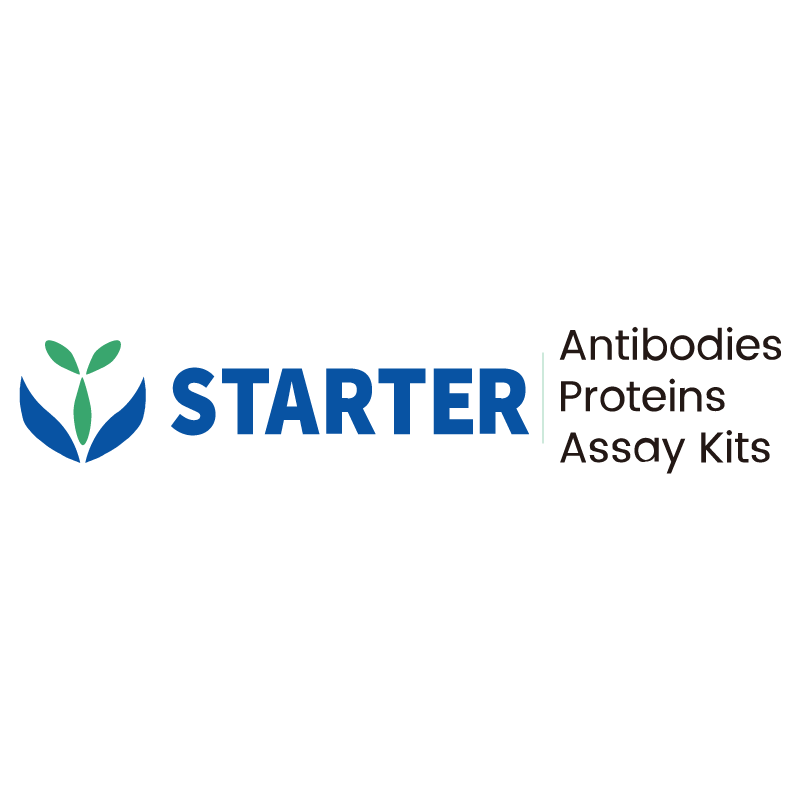WB result of DDX4 Recombinant Rabbit mAb
Primary antibody: DDX4 Recombinant Rabbit mAb at 1/1000 dilution
Lane 1: mouse spleen lysate 20 µg
Lane 2: mouse brain lysate 20 µg
Lane 3: mouse testis lysate 20 µg
Negative control: mouse spleen lysate; mouse brain lysate
Secondary antibody: Goat Anti-rabbit IgG, (H+L), HRP conjugated at 1/10000 dilution
Predicted MW: 79 kDa
Observed MW: 80 kDa
Product Details
Product Details
Product Specification
| Host | Rabbit |
| Antigen | DDX4 |
| Synonyms | Probable ATP-dependent RNA helicase DDX4; DEAD box protein 4; Vasa homolog; VASA |
| Immunogen | Synthetic Peptide |
| Location | Cytoplasm |
| Accession | Q9NQI0 |
| Clone Number | S-1570-48 |
| Antibody Type | Recombinant mAb |
| Isotype | IgG |
| Application | WB, IHC-P, IF |
| Reactivity | Hu, Ms, Rt |
| Positive Sample | Human ovary, human testis, mouse ovary, mouse testis, rat ovary, rat testis |
| Predicted Reactivity | Bv, Pg, Mk |
| Purification | Protein A |
| Concentration | 0.5 mg/ml |
| Conjugation | Unconjugated |
| Physical Appearance | Liquid |
| Storage Buffer | PBS, 40% Glycerol, 0.05% BSA, 0.03% Proclin 300 |
| Stability & Storage | 12 months from date of receipt / reconstitution, -20 °C as supplied |
Dilution
| application | dilution | species |
| WB | 1:1000 | Ms, Rt |
| IHC-P | 1:2000 | Hu, Ms, Rt |
| IF | 1:1000 | Hu |
Background
The DDX4 protein, also known as Vasa or DEAD-box polypeptide 4, is a highly conserved germline factor among multicellular organisms. It is a member of the DEAD-box RNA helicase family and is involved in various cellular processes, including mRNA translation, germ cell development, and the regulation of gene expression. DDX4 is typically expressed in germ cells and is often used as a marker for these cells. It plays a role in the development of germ cells in a variety of species, including marsupials and monotremes, suggesting its essential function in the regulation of germ cell proliferation and differentiation. In the context of cancer, DDX4 has been found to be re-expressed in somatic cells, including cancer cells. Its expression has been linked to chemoresistance in small cell lung cancer (SCLC) cells. DDX4's involvement in mRNA translation and its enrichment on the mitotic apparatus suggest that it may contribute to the neoplastic characteristics of cancer cells, such as increased cell survival and drug resistance. Furthermore, DDX4 has been implicated in the formation of RNA-protein germ granules, which are important for germline development. Its functions in piRNA biogenesis and embryonic patterning are dependent on specific C-terminal residues that are unique to Vasa among DEAD-box helicases.
Picture
Picture
Western Blot
WB result of DDX4 Recombinant Rabbit mAb
Primary antibody: DDX4 Recombinant Rabbit mAb at 1/1000 dilution
Lane 1: rat spleen lysate 20 µg
Lane 2: rat brain lysate 20 µg
Lane 3: rat testis lysate 20 µg
Negative control: rat spleen lysate; rat brain lysate
Secondary antibody: Goat Anti-rabbit IgG, (H+L), HRP conjugated at 1/10000 dilution
Predicted MW: 79 kDa
Observed MW: 80 kDa
Immunohistochemistry
IHC shows positive staining in paraffin-embedded human testis. Anti-DDX4 antibody was used at 1/2000 dilution, followed by a HRP Polymer for Mouse & Rabbit IgG (ready to use). Counterstained with hematoxylin. Heat mediated antigen retrieval with Tris/EDTA buffer pH9.0 was performed before commencing with IHC staining protocol.
Negative control: IHC shows negative staining in paraffin-embedded human kidney. Anti-DDX4 antibody was used at 1/2000 dilution, followed by a HRP Polymer for Mouse & Rabbit IgG (ready to use). Counterstained with hematoxylin. Heat mediated antigen retrieval with Tris/EDTA buffer pH9.0 was performed before commencing with IHC staining protocol.
Negative control: IHC shows negative staining in paraffin-embedded human stomach. Anti-DDX4 antibody was used at 1/2000 dilution, followed by a HRP Polymer for Mouse & Rabbit IgG (ready to use). Counterstained with hematoxylin. Heat mediated antigen retrieval with Tris/EDTA buffer pH9.0 was performed before commencing with IHC staining protocol.
Negative control: IHC shows negative staining in paraffin-embedded human breast cancer. Anti-DDX4 antibody was used at 1/2000 dilution, followed by a HRP Polymer for Mouse & Rabbit IgG (ready to use). Counterstained with hematoxylin. Heat mediated antigen retrieval with Tris/EDTA buffer pH9.0 was performed before commencing with IHC staining protocol.
IHC shows positive staining in paraffin-embedded mouse ovary. Anti-DDX4 antibody was used at 1/2000 dilution, followed by a HRP Polymer for Mouse & Rabbit IgG (ready to use). Counterstained with hematoxylin. Heat mediated antigen retrieval with Tris/EDTA buffer pH9.0 was performed before commencing with IHC staining protocol.
IHC shows positive staining in paraffin-embedded mouse testis. Anti-DDX4 antibody was used at 1/2000 dilution, followed by a HRP Polymer for Mouse & Rabbit IgG (ready to use). Counterstained with hematoxylin. Heat mediated antigen retrieval with Tris/EDTA buffer pH9.0 was performed before commencing with IHC staining protocol.
IHC shows positive staining in paraffin-embedded rat testis. Anti-DDX4 antibody was used at 1/2000 dilution, followed by a HRP Polymer for Mouse & Rabbit IgG (ready to use). Counterstained with hematoxylin. Heat mediated antigen retrieval with Tris/EDTA buffer pH9.0 was performed before commencing with IHC staining protocol.
Immunofluorescence
IF shows positive staining in paraffin-embedded human testis. Anti- DDX4 antibody was used at 1/1000 dilution (Green) and incubated overnight at 4°C. Goat polyclonal Antibody to Rabbit IgG - H&L (Alexa Fluor® 488) was used as secondary antibody at 1/1000 dilution. Counterstained with DAPI (Blue). Heat mediated antigen retrieval with EDTA buffer pH9.0 was performed before commencing with IF staining protocol.
Negative control: IF shows negative staining in paraffin-embedded human cerebral cortex. Anti- DDX4 antibody was used at 1/1000 dilution and incubated overnight at 4°C. Goat polyclonal Antibody to Rabbit IgG - H&L (Alexa Fluor® 488) was used as secondary antibody at 1/1000 dilution. Counterstained with DAPI (Blue). Heat mediated antigen retrieval with EDTA buffer pH9.0 was performed before commencing with IF staining protocol.


